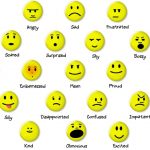 Next week, I meet with the Conscious Leadership Tribe to discuss Commitment #3 from the 15 Commitments of Conscious Leaders: “I commit to feeling my feelings all the way through to completion. They come, and I locate them in my body then move, breathe and vocalize them, so they release all the way.” It’s a topic that this group of leaders comes back to from time-to-time because we assert that conscious leaders are emotionally intelligent.
Next week, I meet with the Conscious Leadership Tribe to discuss Commitment #3 from the 15 Commitments of Conscious Leaders: “I commit to feeling my feelings all the way through to completion. They come, and I locate them in my body then move, breathe and vocalize them, so they release all the way.” It’s a topic that this group of leaders comes back to from time-to-time because we assert that conscious leaders are emotionally intelligent.
Dan Goleman brought the phrase “emotional intelligence” into the leadership lexicon with his 1995 book by the same name and through his Harvard Business Review Article entitled: “What Makes a Leader?“. Through his research, Goleman found that highly effective leaders distinguished themselves with qualities of self-awareness and regulation, as well as motivation, empathy, and social skill.
Unfortunately, at the time, there was not much advice for those of us who are “sensitive” and experience our own emotions (as well as those of others) very strongly. We can often ascribe a polarity (positive or negative) to feelings, and we can experience them with varying degrees of intensity. Fortunately, science is now beginning to describe what Buddhist and Stoic philosophers knew over two millennia ago: the mind and body create emotions based on current input and past experiences. Also, the mindfulness movement in business is helping leaders recognize and label their feelings in the workplace while enabling others to do the same.
Which brings us to the heart of the topic of this post – dealing with difficult, or afflictive, emotions. In the Tibetan Buddhist tradition, these are called Kleshas or mental states that cloud the mind and result in unwholesome actions. Some of these include anxiety, fear, anger, jealousy, hatred, and desire (to name a few). For me, anger (in it’s various strong, mild, and weak forms) is an emotion that can come up fast and if I am not mindful can lead to harmful speech or actions which I often regret later (think of the Hulk). Thankfully, I’ve established a daily practice of sitting meditation which helps me be more mindful of my feelings. I am now more skillful (although not completely skillful) at noticing when anger arises than previously. I breathe and create, as Viktor Frankl said [paraphrase]: “a space between stimulus and response.”
In the leadership context, it is helpful to acknowledge that people come to work as human beings that possess and experience a FULL RANGE of emotions. As leaders, we can take full responsibility for our own feelings, noticing them as they arise and expressing them candidly. We can also create environments of candor that allow colleagues to do the same.
One place to start is here. I encourage you to share a time when you artfully handled a difficult emotion that arose around a topic at work, and also a time when you were not so skillful.
And, if you want to expand your range as an emotionally intelligent leader, I invite you to joins us for our online Advanced Leadership Course. You WILL expand your ability and range in this domain. That’s a promise.
David Langiulli is an executive coach and trainer who helps nonprofit leaders and their teams flourish, thrive, and get results.